“He calls these comics, but they’re not very funny, are they?” – interview with Si Smith
November 7, 2019
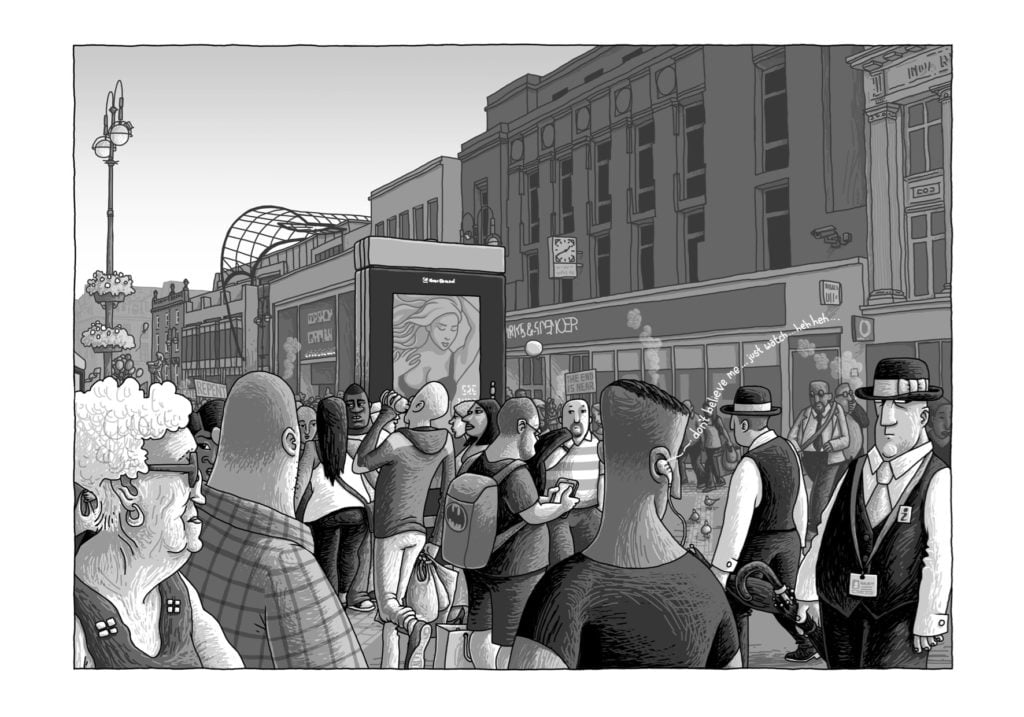
Si Smith
Meg Rowley caught up with exhibition curator and illustrator Si Smith to find out why he loves the medium, what he thinks of the scene in Leeds and how mad you have to be to run a comic workshop with kids.
When I was a kid, comics were a Saturday afternoon staple. Desperate Dan was my hero and I lived vicariously through the adventures of Minnie the Minx. But as classic as the Dandy and Beano are, there’s a lot more to comics than slapstick and cow pies.
The Panel Show exhibition at Farsley’s Sunny Bank Mills brings together artists, illustrators and graphic novelists from the UK and beyond to shine a light on some of the most interesting, diverse and iconic examples of the genre.
Tell us a bit about the Panel Show exhibition. How did it come about?
I co-curated the exhibition with Dick Bonham, who has a long history with Sunny Bank Mills. When we first started planning it we got very excited about the possibilities. We put together an absolute dream wish list of 40 or so comic book artists we would love to have, with no restrictions. We got 12 of them, which was pretty good going. And then it went from there.
One of the things we wanted to do right from the start was to show the process of how comics are put together. The show has 39 different artists in total and loads of complete artwork, but it’s also got pencil drawings, layouts and scripts. You can see how a comic gets made, from how it’s written right up to when it’s delivered to the publishers.
The gallery at Sunny Bank has a loyal customer base, and we also knew that we’d get the comic geeks in like us, especially when we got big names like Tillie Walden who is massive in the comic world. But we also wanted to explain comics to people who only think of them as the Beano and the Dandy.
Whose idea was it to do workshops for kids?
It was a no-brainer really. The gallery has a programme of events and is really good at getting the community involved. Also, comics are really accessible and it’s very much in the spirit of the genre to workshop them and see what people come up with.
When you’re working with young people you’ve got to be prepared for things to go off in a different direction. I thought I had an interesting way of generating a character, but in one of the workshops one kid just wasn’t having it. He knew exactly what he wanted to do – he came up with this character called The Pants, who was a pair of worn underpants that was waging war on humanity. His nemesis was Washing Machine Man. It was absolutely genius and it would have been a crime to stop that happening!
What about your own work – how did you get into illustration?
My dad paints, my granddad painted a bit as well, so I’ve grown up with art. I still find it shocking when people say they don’t draw, because I just assumed that what’s everybody did. I did the classic route and did a Foundation course, then a degree in illustration. Then I went into teaching for a bit. In my classroom there was a lot of art, a lot of drawing and not very much maths.
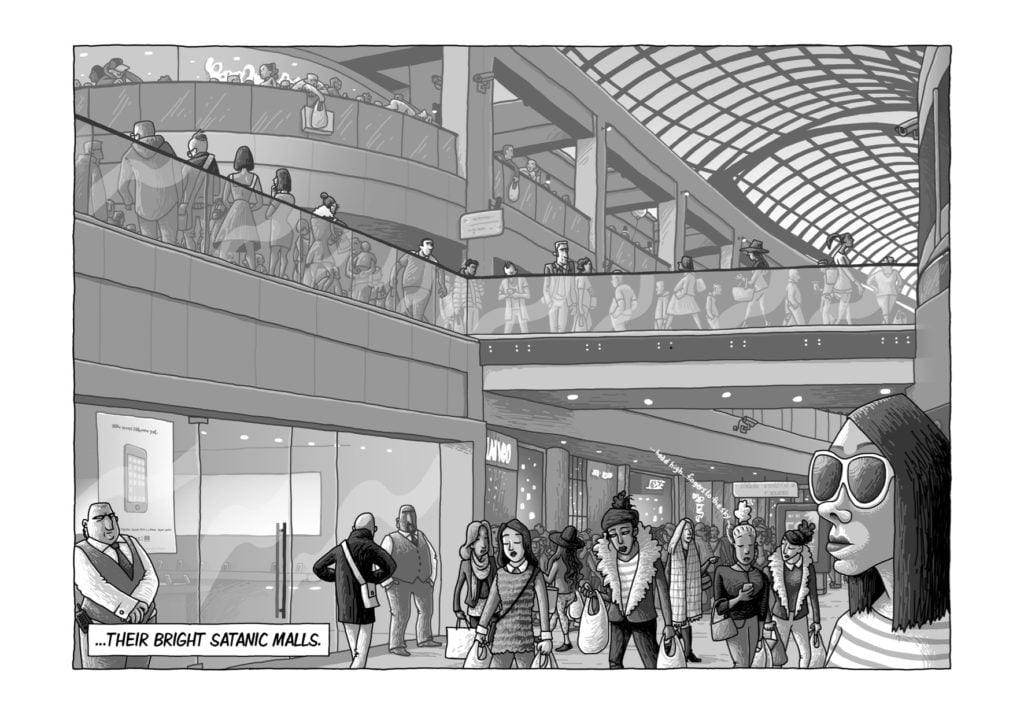
Si Smith
What’s your illustration style?
It’s hard to define because it depends on the job. I do a lot of children’s books and textbooks for schools, which I guess are quite straightforward, more knock-about illustration. I’ve also done a few Leeds-based comics in the past few years called ‘How to Disappear Completely’, ‘Abide with Me’ and most recently, ‘Signs’. There is humour and parts that will make you smile, but they are quite serious and deal with some big issues. ‘Abide with Me’, for example, offers different perspectives on memory loss.
I overheard my dad once saying to my mum, “You know he calls these comics, but they’re not very funny, are they?” That was a sort of badge of honour for me.
How do you work? What’s your process and where do you get your ideas?
My process is all over the place. Usually, my comics just kind of happen and I have to find the space to let them be what they’re going to be. All of the locations are genuine Leeds settings. If I’m on the bus I’ll have a sketchbook out and I’ll be drawing people and places, then a lot of these appear in the comics. A friend said to me one time that all my work is like a love letter to Leeds, and he’s probably right.
Why comics?
You can do anything with them. You can go anywhere, you can tell any story that you want and there are no restrictions on your budget. I did a Christmas comic a few years ago for the diocese of Blackburn about advent and it had no words in it, just empty speech bubbles. Blackburn has more Church of England schools than any other diocese in the country and also has lots of children with English as their second language. The idea was that as you read it you decide what was in the speech bubbles yourself. In doing things visually and inviting people to tell the story themselves, you can engage people and not exclude anyone. Comics can do that in a way the written word just can’t.
Who are you inspired by?
How long have you got? It’s a bit like asking me what my top ten singles are – I could spend the rest of the day listing them! But in the exhibition we’ve got some of my favourites. Warwick Johnson Cadwell, who has drawn for Tank Girl, is just out of this world, he sorts of bends perspective and his drawing is off the scale. We’ve got some work by Jonathan Edwards which I really like, and there’s an American children’s book and comic artist called Sara Varon in there – her work is properly bonkers, but it’s brilliant.
Is Leeds a good place for art and illustration?
Definitely, there’s tons of stuff going on in Leeds. You’ve got the Henry Moore Institute and Leeds Art Gallery, as well as smaller independent studios like East Street Arts and Left Bank. Leeds Inspired, who has funded the Panel Show exhibition, have been massively supportive and we’re really lucky to have them on board.
And if you’re into graphic novels, then OK Comics is a hidden gem. It really is one of the best comic shops around. They got nominated for an Eisner Award a couple of years ago, which is like the Oscars of comics. Colour May Vary is another one that is really interesting because they started off as a shop but they are now more like a community hub for people who like design. They have a social role way beyond just selling stuff.
I think possibly the scene in Leeds doesn’t always connect that well. There are lots of people doing lots of things, but sometimes it feels as though it’s competing rather than collaborating. But it’s a bit churlish to complain about it because there are some amazing things going on. And to a certain extent it’s just about finding the time and energy to go and see it all.
The Panel Show exhibition is at Sunny Bank Mills in Farsley till 10 November.
You can find out more about Si Smith’s work on his website.
Filed under: Art & Photography
Tagged with: accessible, comics, community, creative process, exhibition, graphic, humour, illustration, si smith, Sunny Bank MIlls, workshop
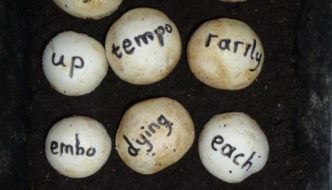
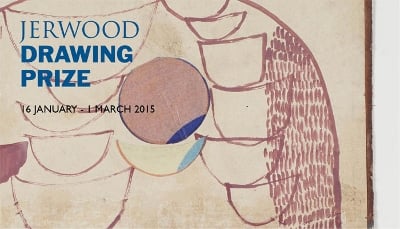
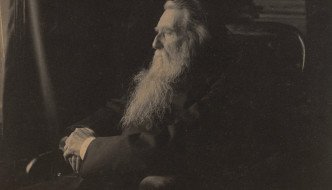
Comments